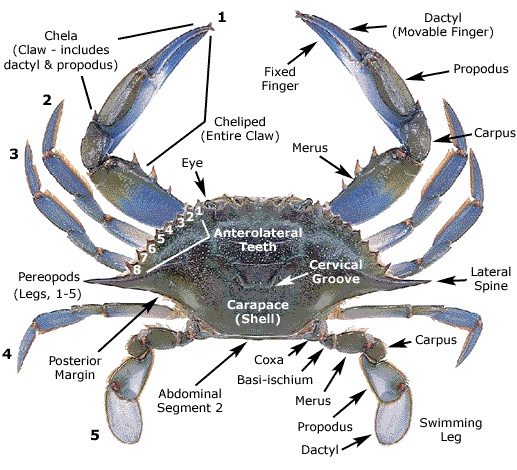Bottom Crabs

Lumped together here are what might be considered to be "normal" aquatic crabs. There are many other similar types. The claws of many crabs are good eating - break one off and let the crab go, it will grow a new one. Never take both - you'll kill it.
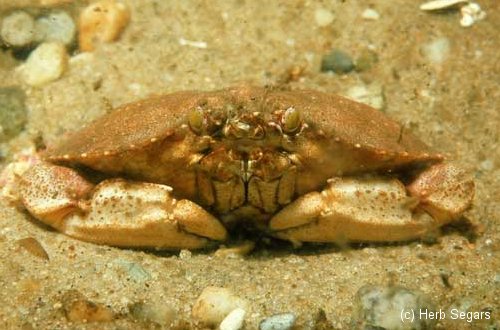
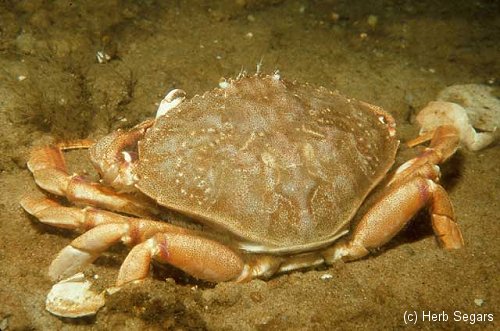
The Rock Crab is one of the commonest shallow-water crabs. It is usually found sheltering in nooks and crevices. It is a fairly unaggressive species, more likely to hunker down and cover up its face ( as in the top picture ) than pinch if molested. Size: to 5". Range: Labrador to South Carolina.
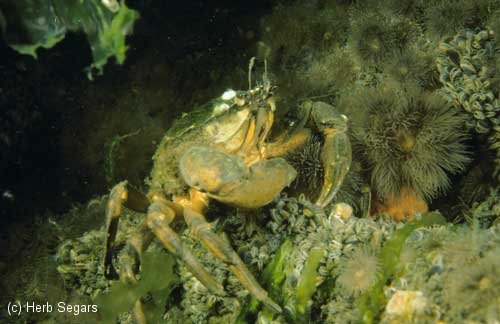

The Green Crab is an introduced species that is originally from Northern Europe but has invaded many areas throughout the world. It is a direct competitor for native species, especially the Rock Crab, with whom it shares habitat and feeding preferences. Size: to 3". Range: New Jersey to Nova Scotia, and into the Gulf of St. Lawrence.
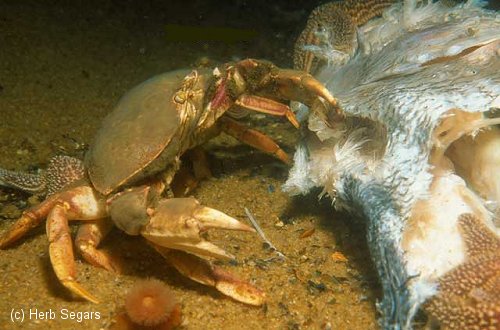
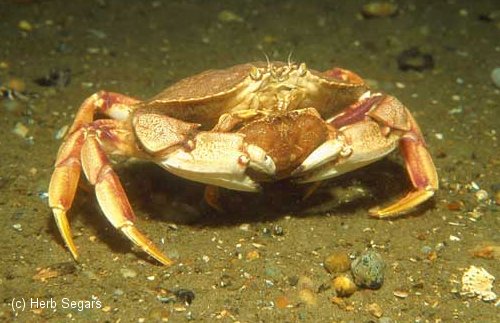
The Jonah Crab is similar to the Rock Crab, but it is normally found in deeper water. Occasionally, a Jonah Crab may wander into shallow water and can be found by scuba divers. The Jonah Crab has rough-shaped teeth along the sides of its shell, while the Rock Crab has smooth-shaped teeth. In addition, the Jonah Crab has a more heavily armored appearance than the Rock Crab, and is much more likely to fight back if provoked. Size: to 6". Range: Nova Scotia to Florida.
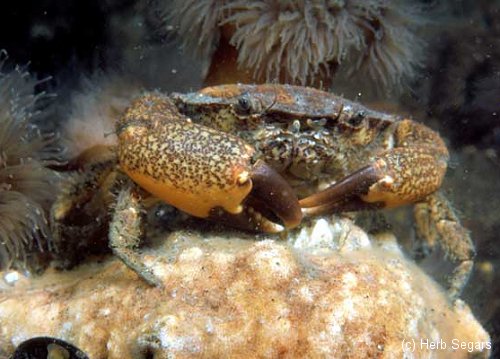
Mud Crabs are predators on young oysters and clams; their powerful claws can crush 1/2 " long hard clams; they also attack barnacles and larger clams by chipping their shells. Mud Crabs are often abundant in sponge colonies, among bushy bryzoans and hydroids on pilings, and intertidally under rocks or other debris on protected shores. The Mud Crab's shell has five marginal teeth, compared to as many as nine for the other species here. The claws are distinctly unequal. Size: 1 1/2 ". Range: Massachusetts to Brazil.


